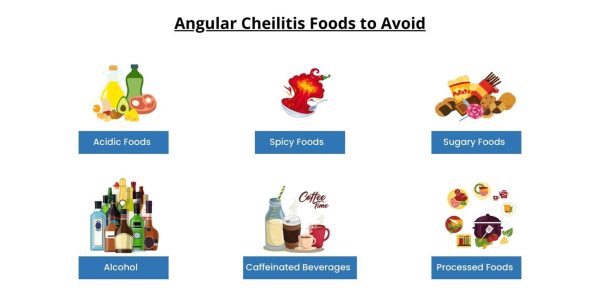Angular cheilitis, often referred to as perleche, is a common inflammatory condition characterized by redness, swelling, and painful cracks at the corners of the mouth. This condition can affect individuals of all ages but is particularly prevalent among certain groups. People with weakened immune systems, such as those with diabetes or HIV, are more susceptible.
Individuals with nutritional deficiencies, especially a lack of iron or B vitamins, are at a higher risk. Elderly individuals, due to their often compromised health and less robust skin, frequently experience angular cheilitis.
Children who drool excessively or those who use pacifiers can also be affected, making it a widespread issue across different demographics.
What is Angular Cheilitis?
Angular cheilitis is a medical condition characterized by the inflammation and cracking of the skin at the corners of the mouth. It often presents as red, swollen patches that can be painful and sometimes bleed. The condition can be caused by a variety of factors, including fungal or bacterial infections and excessive moisture from saliva.
Additionally, habits such as frequent licking of the lips or ill-fitting dentures can exacerbate the problem. While angular cheilitis can be uncomfortable and unsightly, it is generally treatable with proper care and attention to underlying causes.
Angular Cheilitis Stages
Angular cheilitis progresses through several stages, each marked by different symptoms and severity. Understanding these stages can help in early identification and prompt treatment, preventing the condition from worsening. The stages typically begin with mild symptoms and can escalate if left untreated.
- Initial Stage: Slight redness and discomfort at the corners of the mouth.
- Intermediate Stage: Noticeable swelling and the development of small cracks or fissures.
- Advanced Stage: Deep, painful cracks that may bleed, accompanied by crusting or scabbing.
- Severe Stage: Chronic inflammation with potential secondary infections, causing significant discomfort and difficulty in opening the mouth.
Who Gets Angular Cheilitis?
Angular cheilitis can affect anyone, but certain groups are more prone to developing this condition. Individuals with weakened immune systems, such as those with diabetes or HIV, are particularly susceptible due to their body’s reduced ability to fight off infections. Nutritional deficiencies, especially a lack of iron or B vitamins, can also increase the risk, making it common among those with poor dietary habits.
Elderly individuals are frequently affected due to age-related health issues and the tendency for their skin to become thinner and more fragile. Additionally, people who wear ill-fitting dentures, children who drool excessively, and those who have habits like frequent lip licking or thumb-sucking are also at higher risk.
Angular Cheilitis Causes
influences, and personal habits. Recognizing these causes is essential for effective prevention and treatment. The condition typically results from a combination of microbial, nutritional, and mechanical factors.
- Fungal Infections: Candida yeast is a common culprit.
- Bacterial Infections: Staphylococcus aureus and other bacteria can contribute.
- Nutritional Deficiencies: Lack of iron, zinc, and B vitamins.
- Excessive Moisture: Drooling or frequent lip licking.
- Poor-fitting Dentures: Can cause irritation and trap moisture.
- Dry Skin: Especially common in cold weather.
- Immune System Disorders: Conditions like HIV/AIDS or diabetes.
- Oral Habits: Frequent thumb-sucking or use of pacifiers in children.
Does Angular Cheilitis Go Away on its Own?
Angular cheilitis can sometimes resolve on its own, particularly if it is mild and the underlying cause is addressed. However, without proper treatment, the condition can persist or even worsen, leading to increased discomfort and potential complications. Implementing effective angular cheilitis self-care measures can significantly aid in the healing process.
These measures include maintaining good oral hygiene, keeping the affected area clean and dry, and addressing any nutritional deficiencies with a balanced diet or supplements. Additionally, avoiding habits that exacerbate the condition, such as lip licking or wearing poorly fitting dentures, can help.
In more severe cases, seeking medical advice for appropriate antifungal or antibacterial treatments may be necessary to resolve the issue fully.
Over the Counter Angular Cheilitis Overnight Cure
Finding an effective over-the-counter angular cheilitis overnight cure can be challenging, but several remedies may help alleviate the symptoms quickly. While complete healing overnight is rare, these treatments can significantly reduce discomfort and speed up recovery. It’s important to choose remedies that address both the symptoms and the underlying causes to ensure the best results.
 Angular Cheilitis Overnight Cure Naturally
Angular Cheilitis Overnight Cure Naturally
For those seeking a natural approach, certain remedies can help manage angular cheilitis symptoms. A combination of proper hygiene and natural treatments like aloe vera gel, honey, or a mixture of baking soda and water can soothe inflammation and promote healing. Keeping the area clean and dry, along with boosting the immune system through adequate rest and hydration, also plays a crucial role in natural healing.
Tea Tree Oil for Angular Cheilitis
Tea tree oil is known for its potent antifungal and antibacterial properties, making it a popular choice for treating angular cheilitis. Applying a diluted solution of tea tree oil to the affected area can help combat microbial infections and reduce inflammation. However, it’s essential to use it sparingly and ensure it’s properly diluted to avoid skin irritation.
Coconut Oil for Angular Cheilitis
Coconut oil is another effective natural remedy for angular cheilitis due to its moisturizing and antimicrobial properties. Applying a thin layer of coconut oil to the corners of the mouth can keep the area hydrated, preventing further cracking and facilitating healing. Its soothing effect can also alleviate pain and discomfort associated with the condition.
Neosporin for Angular Cheilitis
Neosporin, a popular over-the-counter antibiotic ointment, can be beneficial for angular cheilitis, particularly if a bacterial infection is suspected. Applying a small amount of Neosporin to the affected area can help reduce bacterial growth and promote healing. However, it’s important to follow the product instructions and consult a healthcare professional if symptoms persist or worsen.
Angular Cheilitis Foods to Avoid
Diet plays a significant role in the management and prevention of angular cheilitis. Certain foods can exacerbate the condition by either causing irritation to the already sensitive skin around the mouth or by contributing to nutritional deficiencies that may lead to or worsen angular cheilitis. Being mindful of what you consume can help in alleviating symptoms and speeding up the healing process.
Acidic Foods: Citrus fruits, tomatoes, and vinegar can irritate the skin.
- Spicy Foods: Peppers, hot sauces, and other spicy ingredients can cause discomfort and inflammation.
- Sugary Foods: Sweets, candies, and sugary drinks can promote fungal growth.
- Processed Foods: High in refined sugars and low in essential nutrients, they can contribute to deficiencies.
- Alcohol: Can dehydrate the body and weaken the immune system, making it harder for the body to heal.
- Caffeinated Beverages: Coffee and soda can also lead to dehydration and potential irritation.
Does Salt Water Cure Angular Cheilitis?
Saltwater is often touted as a home remedy for various skin and oral conditions due to its natural antiseptic properties. While it may not cure angular cheilitis overnight, salt water can help manage the symptoms and prevent further infection. Rinsing the mouth with a mild salt water solution can reduce bacteria and fungi, helping to keep the affected area clean.
This can be particularly beneficial if the angular cheilitis is caused by an infection. However, salt water alone is unlikely to cure the condition completely; it should be used in conjunction with other treatments and good oral hygiene practices for the best results.
The Bottom Line
While finding an angular cheilitis overnight cure can be challenging, implementing a combination of effective treatments and self-care practices can significantly reduce symptoms and promote healing. Natural remedies like tea tree oil, coconut oil, honey, and aloe vera, along with over-the-counter options like Neosporin, can provide relief and speed up recovery.
Avoiding certain foods and maintaining good oral hygiene is crucial in managing the condition. By understanding the causes and employing appropriate treatments, you can effectively address angular cheilitis and enhance your overall well-being.


 Angular Cheilitis Overnight Cure Naturally
Angular Cheilitis Overnight Cure Naturally Acidic Foods: Citrus fruits, tomatoes, and vinegar can irritate the skin.
Acidic Foods: Citrus fruits, tomatoes, and vinegar can irritate the skin.